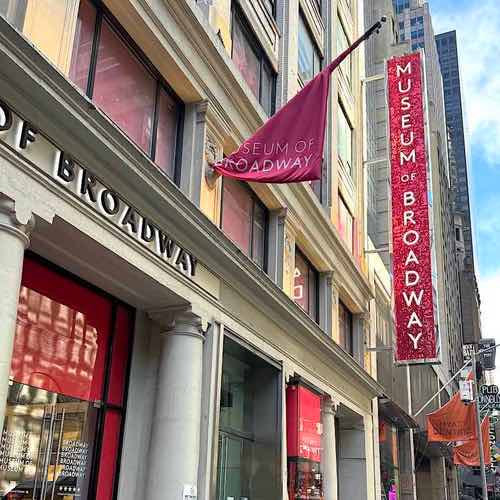
I have been regularly visiting New York City since the mid-1970s to enjoy theater on Broadway. Throughout the years, I have observed significant transformations within the theater district and noted the evolution of the types of productions showcased in Broadway theaters. To date, I have attended performances in a Broadway theater over 100 times and have experienced theater across the country at least three times that number. It is genuinely one of my passions.
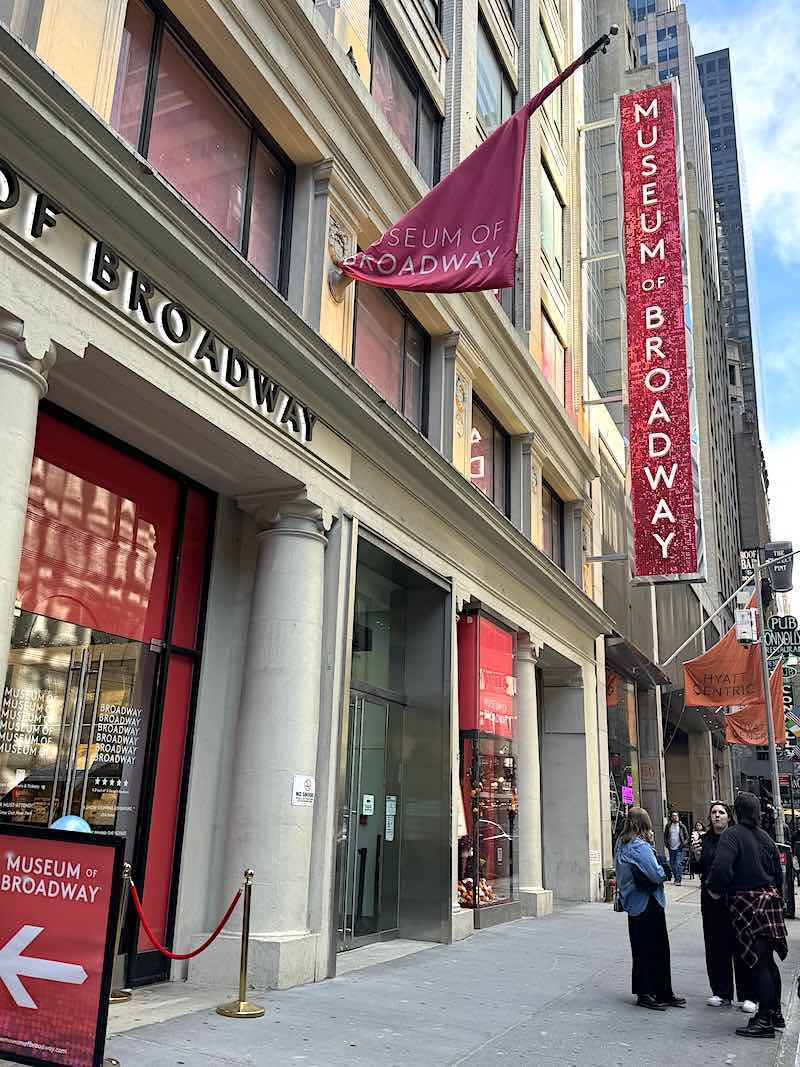
Museum of Broadway
During a recent trip to New York City to attend several Broadway shows, I had a free afternoon on a day without matinee performances. I decided to seek out something new or different to occupy a few hours, so I perused some tourist information booklets.
One attraction that piqued my interest was the Museum of Broadway. I recalled having read about it previously, so I resolved to explore it further. I was thrilled to discover that there was a new museum dedicated to the theater district in New York City. Given that I was specifically in the city to enjoy Broadway shows, it appeared to be an ideal complement to my visit.
Location
The Museum of Broadway is situated just off Times Square on West 45th Street. Its exterior resembles a retail storefront rather than a traditional theater building. The museum officially opened in November 2022, following a two-year delay caused by the COVID-19 pandemic.
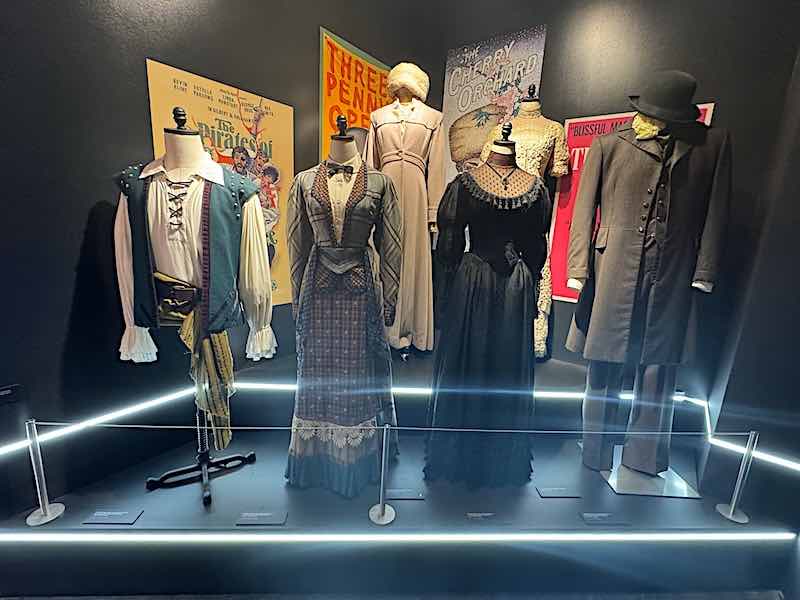
A selection of costumes from musicals and plays on Broadway
Layout
The organization of the museum is made up of three distinct sections: a Map Room that displays the locations of current Broadway theaters, multiple rooms that outline the history of Broadway theater, and various exhibits that provide insight into the production and management of Broadway shows. The museum claims to be the first permanent institution dedicated to documenting the history and impact of Broadway theater, particularly its influence on the Times Square area of New York City. Additionally, it promotes itself as “an interactive and experiential museum that celebrates Broadway’s rich history.”
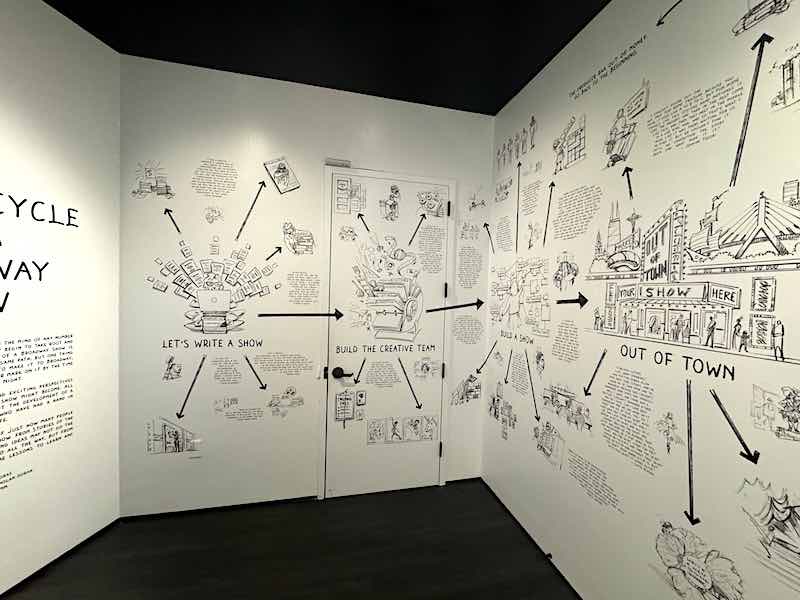
A mural showing the many stages of a Broadways show from creation to post-Broadway
Visit
I purchased my ticket online and arrived slightly ahead of schedule to capture some photographs and explore the gift shop. The entrance tickets are timed to ensure a manageable flow of visitors through the exhibits and to prevent overcrowding in various sections. Upon entering the gift shop and ticketing area, I waited for a few minutes before ascending three flights of stairs to begin my exploration of the museum.
The experience is crafted to provide visitors with a sense of accessing a backstage area of a theater, revealing the history and secrets of Broadway. Guests commence their journey at the top and gradually make their way down through several floors. This approach proved effective, as nearly every space in the hallways and exhibit areas was filled with informative displays and artifacts.
Broadway Theaters
The initial room I encountered at the top of the staircase featured an exhibit showcasing all the current Broadway productions along with their respective theater locations. Following this, visitors were ushered into the Map Room, where we watched a brief video detailing the historical development of theaters in the Times Square area.
Next to this, there was a comprehensive list of the theater organizations that own Broadway theaters. The experience was captivating and underscored the intricacies of the business side of Broadway, as well as the notable individuals who contributed to the establishment of the Theater District in New York. Prominent names such as Shubert, Nerlander, and Jujamcyn were highlighted in the displays.

A tribute to the many popular jukebox musicals featured throughout history on Broadway
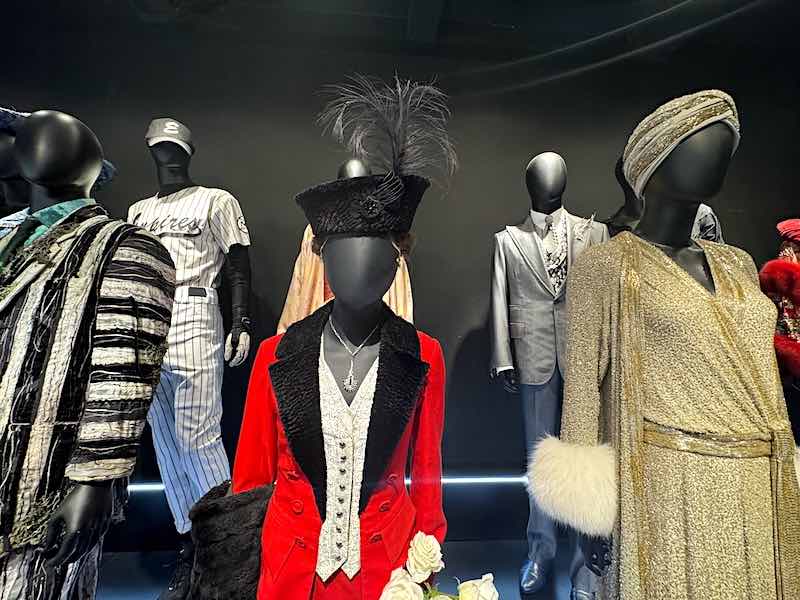
Costumes from noteworthy plays and musicals on Broadway from the past 15 years
Broadway History
A variety of exhibits illustrated the early history of theater in the Broadway District, showcasing artifacts from productions, theaters, and producers dating back to 1732, which marks the first documented performance in New York City. The aim was to offer visitors a comprehensive understanding of the evolution of Broadway shows, tracing their development from the early 1800s to the well-established theater district recognized today.

A recreation of the door to Max Bialystock’s Office commemorating Mel Brooks’ musical The Producers
The historical account encompassed the evolution of performances that included musical entertainment, highlighting the shift from opera to light opera, then to vaudeville, and finally to the modern musical theater experience synonymous with Broadway productions. I found this information particularly captivating, especially the displays that emphasized the Ziegfeld Follies, Showboat, and Kurt Weill’s Threepenny Opera, all of which played a significant role in shaping Broadway musicals.
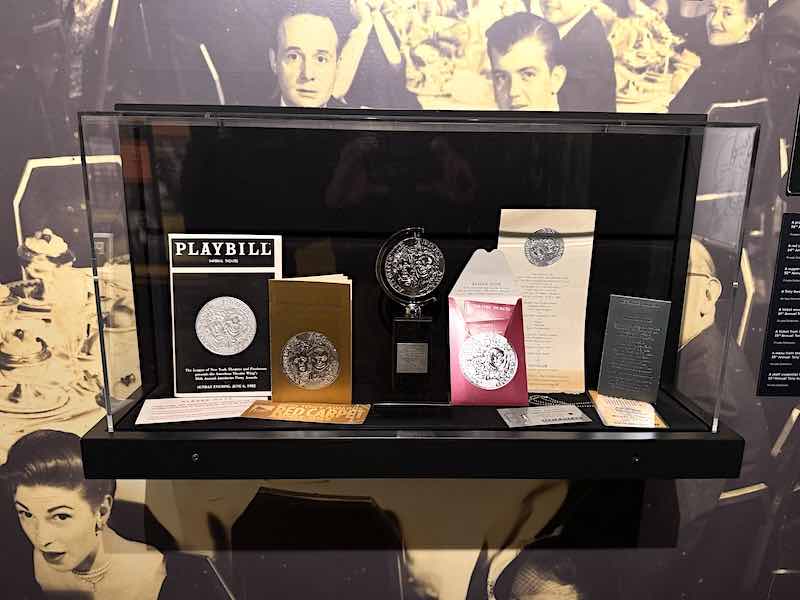
A tribute to the Tony Awards featuring programs and award statues
Furthermore, I was impressed by the number of theaters that have been built, renovated, or demolished, leading to the current total of 41 designated Broadway houses. Most of the exhibits in this section involved reading printed materials and viewing photographs, with the majority of artifacts focusing on theaters in general rather than specific productions.
The early history of the theater district encompassed a wide range of elements, including the diverse individuals connected to Broadway theater and the prominent figures who significantly influenced its creative trajectory. These personalities challenged conventional theater practices, paving the way for innovative and engaging experiences for audiences.
Subsequent exhibits highlighted the composers and lyricists who contributed to the expansion of Broadway during the wartime years. It was particularly enjoyable to encounter information and artifacts related to the Gershwin Brothers, Rodgers and Hart, George M. Cohan, and Irving Berlin. This naturally transitioned to a focus on Oscar Hammerstein II and Richard Rodgers, particularly their groundbreaking musical, Oklahoma.

This production was pivotal as it marked a transition in Broadway from a focus on vaudeville and revues to the enduring plays and musicals that define the genre today. The museum exhibit detailing the creation, success, and impact of Oklahoma represented the first significant exploration of major works that have shaped the Broadway theater landscape.
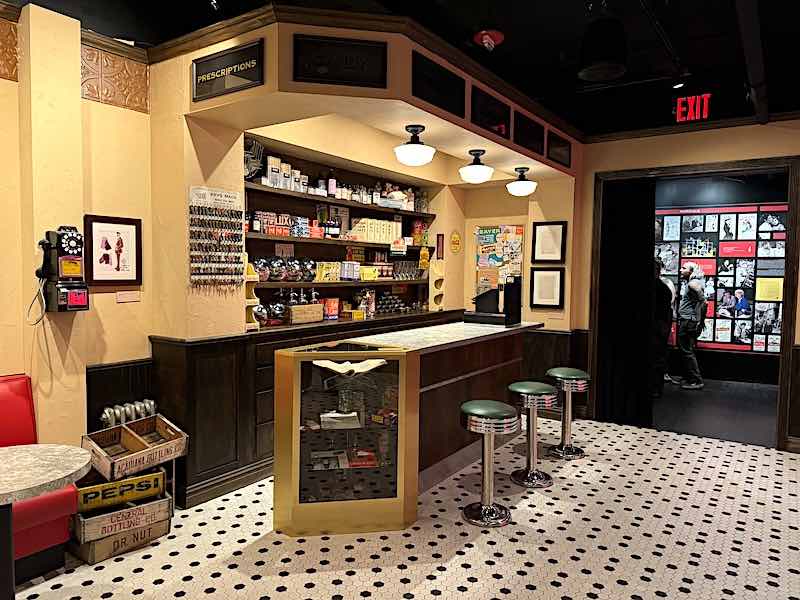
A special exhibit recreating a stage scene from West Side Story
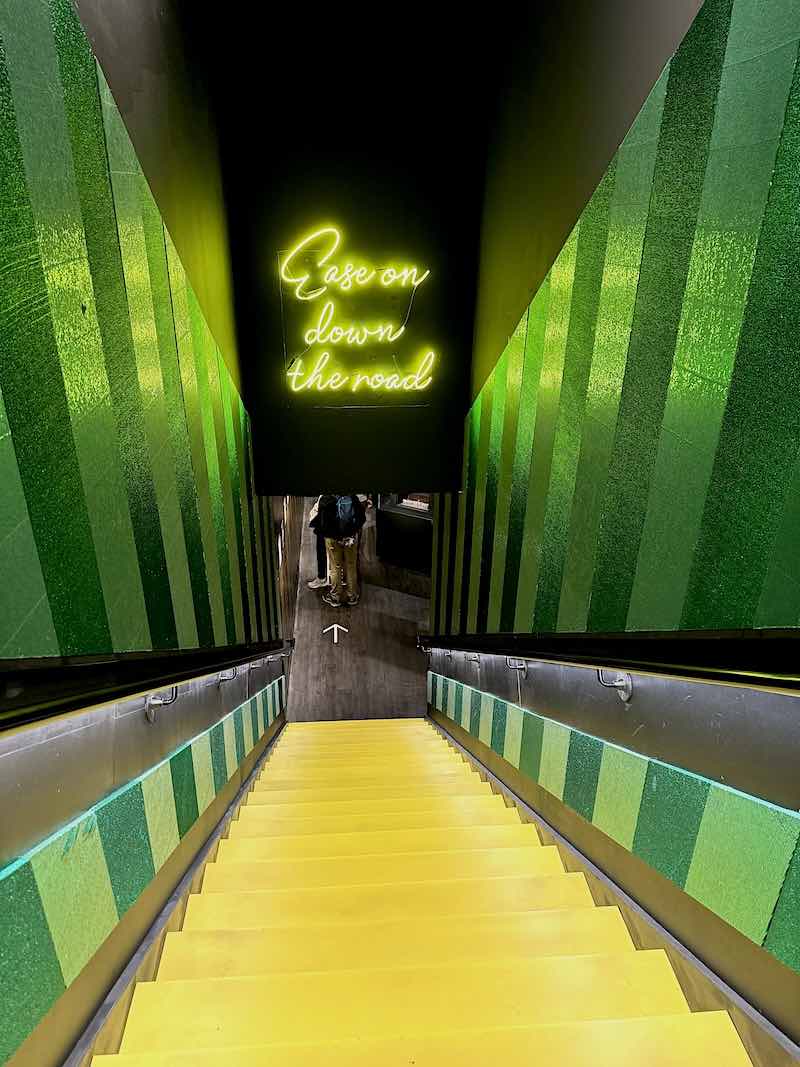
A staircase paying tribute to the musical Wiz on Broadway
The homage to Oklahoma was promptly succeeded by unique installations honoring iconic Broadway productions, including West Side Story, Hello Dolly, Cabaret, Hair, Company, A Chorus Line, Juke Box Musicals, Chicago, Phantom of the Opera, the Wiz, Mama Mia, Rent, The Producers, and the Lion King. Additional exhibits highlighted influential Broadway figures who transformed the artistic landscape of theater, such as Stephen Sondheim, Marvin Hamlisch, Bob Fosse, Jerome Robbins, and Andrew Lloyd Webber.
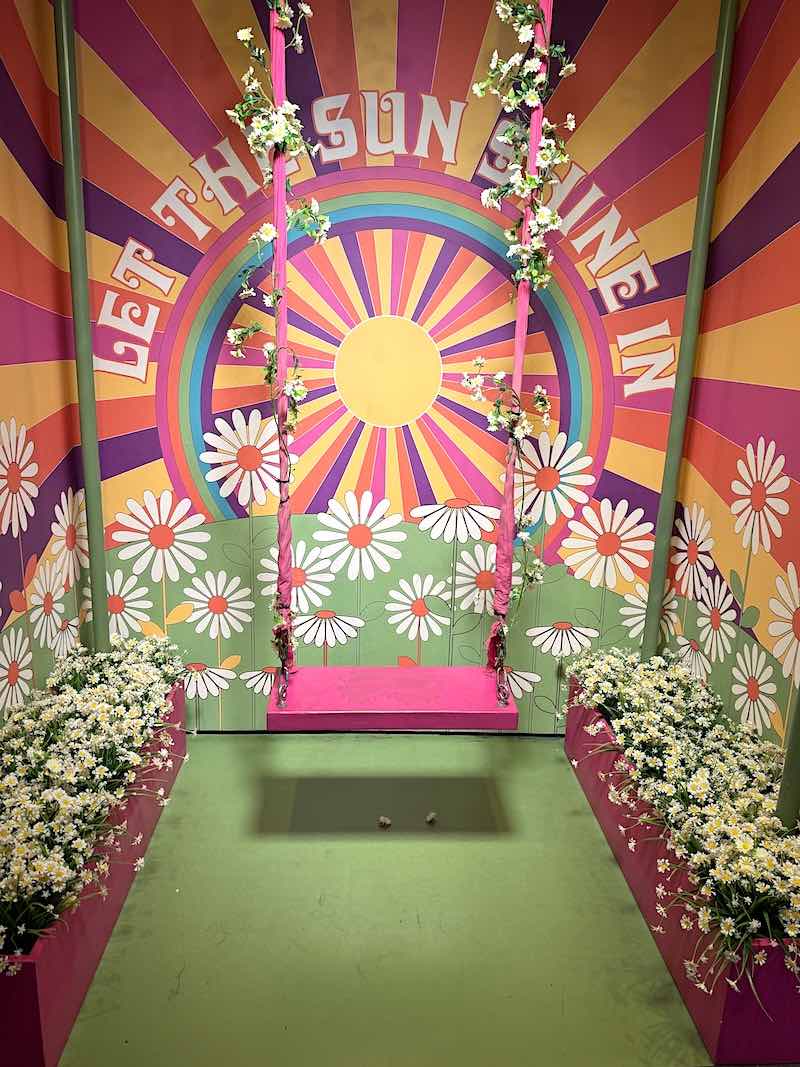
An exhibit celebrating the groundbreaking musical Hair on Broadway
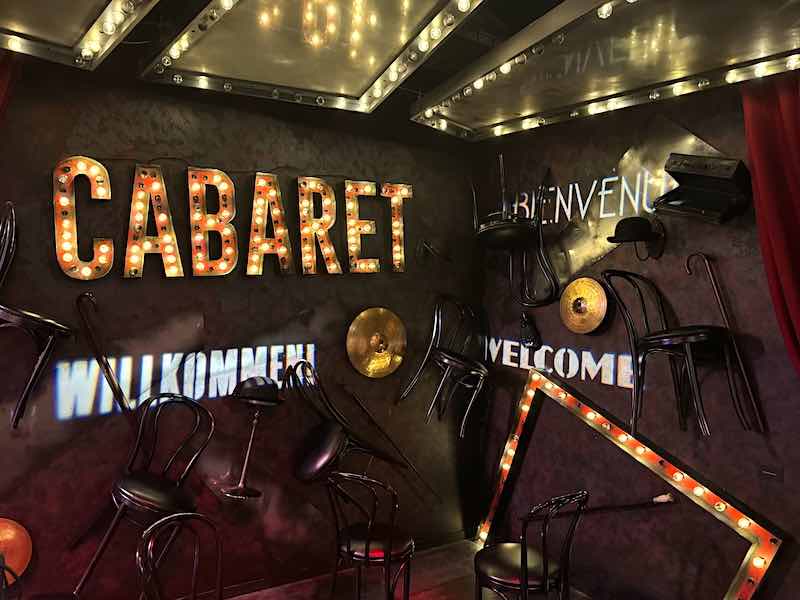
A tribute to the many versions of the musical Cabaret on Broadway
These significant installations were highly engaging and offered excellent opportunities for photography for attendees. On the day of my visit, the venue was not crowded, allowing ample time to explore the artifacts and appreciate the vibrant and captivating ambiance of the displays. Even the staircases were creatively themed to utilize every inch of space to showcase various productions.
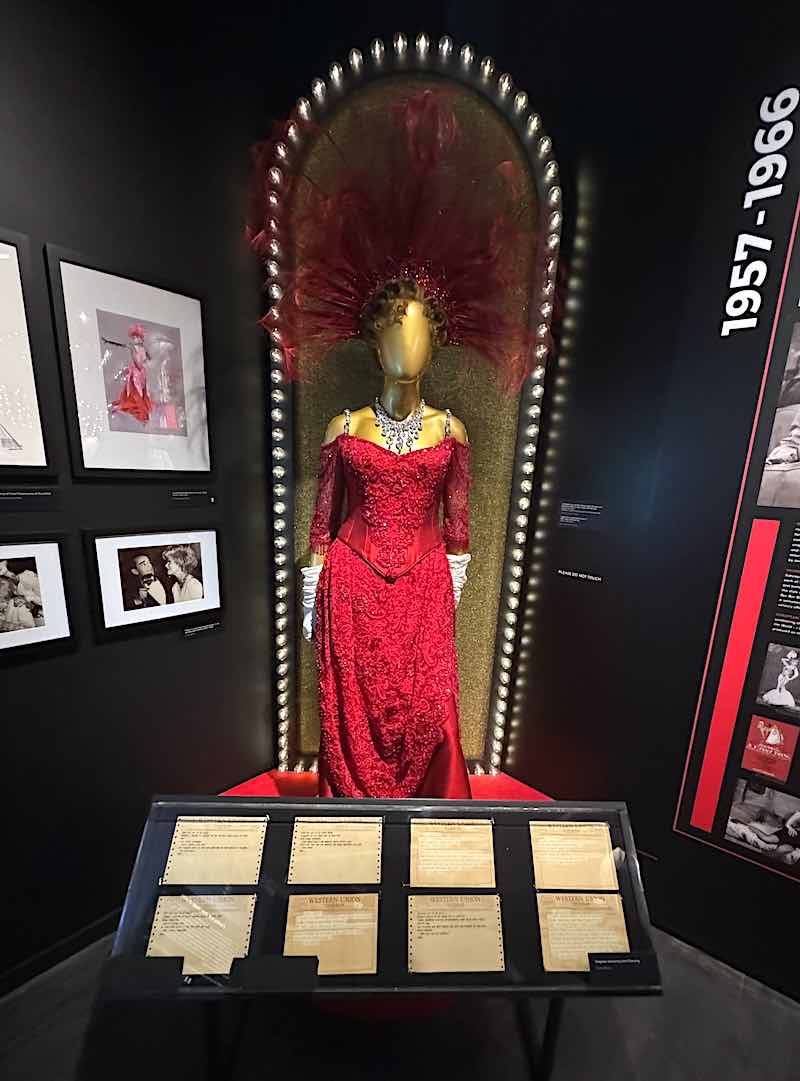
A tribute to Carol Channing and Jerry Herman’s Hello Dolly
One of the memorable aspects of my visit was the lively conversations among guests. At the Hello Dolly exhibit, a woman expressed her discontent, arguing that more emphasis should have been placed on Carol Channing and Jerry Herman, as well as the importance of Hello Dolly. Other attendees shared nostalgic stories about their first attendance at specific shows and the impact those experiences had on them. The museum effectively united visitors through their shared passion for theater, providing a space for individuals to reflect on productions that held special meaning in their lives.
One notable observation I made was that, although the initial displays included references to non-musical theater and drama, this focus rapidly diminished as visitors progressed through the museum. Indeed, following the introduction of prominent musical installations, there were minimal mentions of plays and non-musical works.
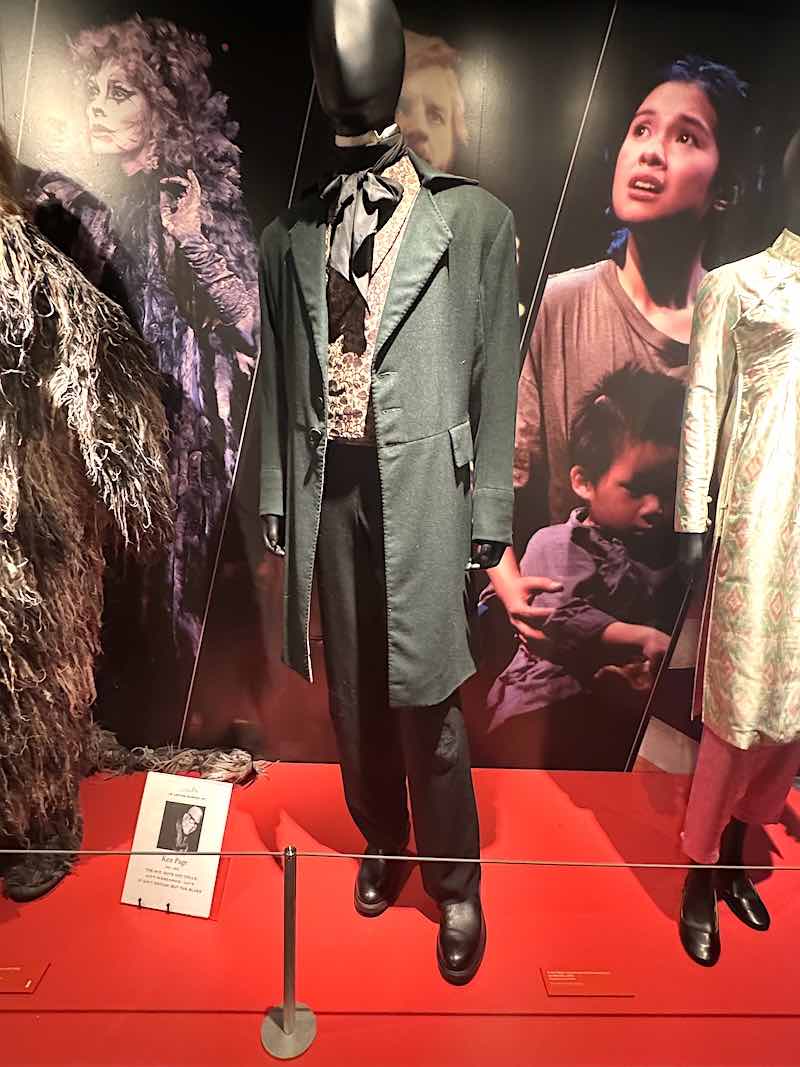
A costume from the popular Broadway musical Les Miserables
Additionally, I noted that opinions varied among individuals regarding which productions were pivotal in shaping the evolution of Broadway theater. One gentleman expressed his dissatisfaction with the scant references to the musical Dream Girls. Ultimately, he discovered a few photographs, yet he believed the museum overlooked a crucial aspect of theater history. I was also surprised to find that my favorite Broadway musical, Les Miserables, was represented by only a handful of costumes.

Costumes from the landmark musical A Chorus Line
Costumes, Props, and Sets
Most artifacts showcased from renowned Broadway productions consisted of costumes, props, and scale models of set designs. Numerous items, including the music box from Phantom of the Opera, the lamp from Aladdin, puppets from Avenue Q, and masks from The Lion King, were easily identifiable to attendees.
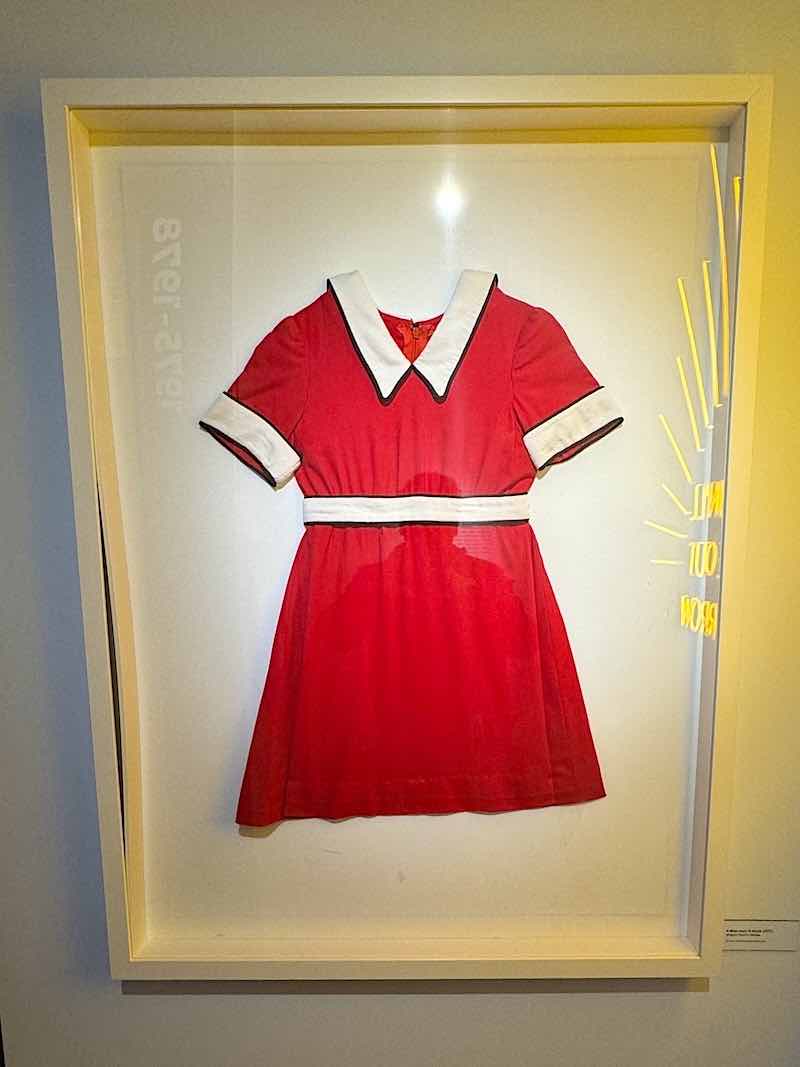
The iconic red dress from the original production of the musical Annie
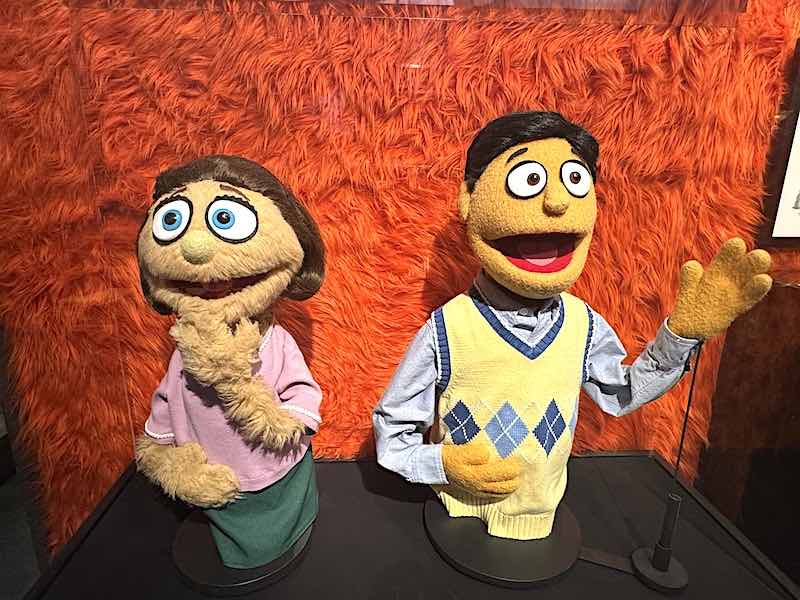
Two puppets from the Broadway musical Avenue Q
The scale models of sets from In the Heights, Wicked, Moulin Rouge, and The Great Comet were particularly enjoyable due to their intricate details, which helped recall various scenes from the musicals. Costumes were the predominant artifacts, with a wide array sourced from different musicals and plays. Overall, artifacts from the past 15 years of Broadway were the most prevalent in the displays, while older productions featured fewer physical artifacts.
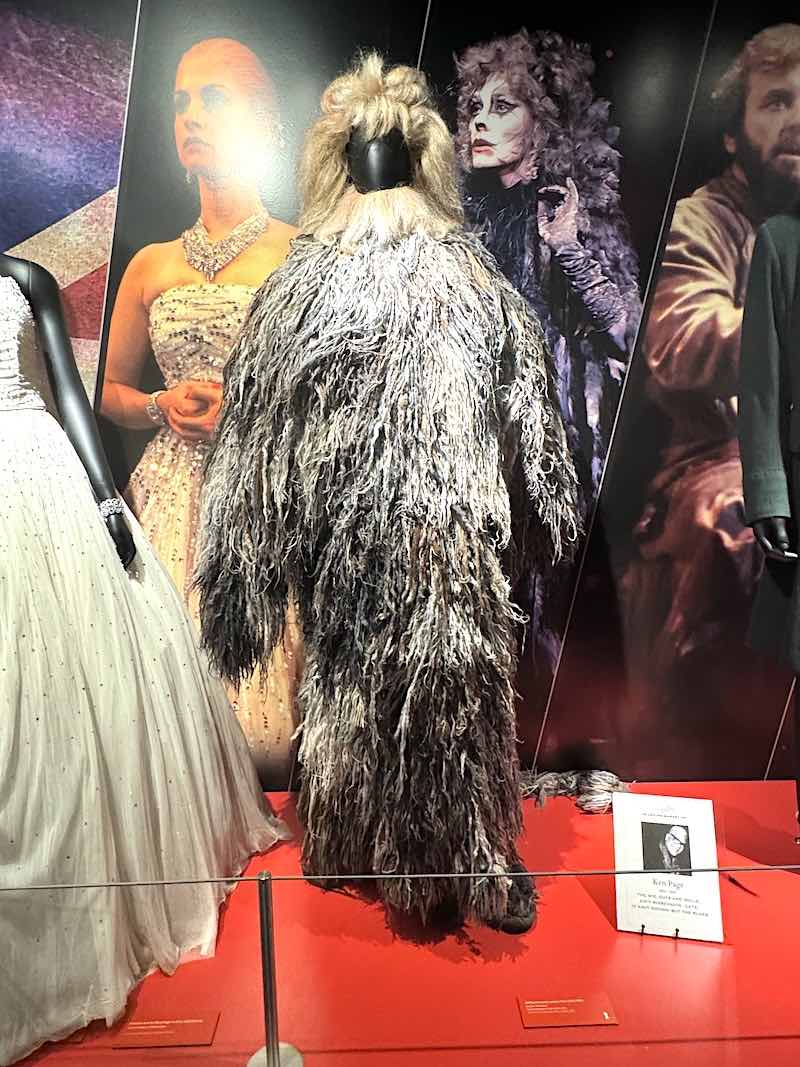
The costume of Old Deuteronomy worn by Ken Page in the Andrew Lloyd Weber musical Cats
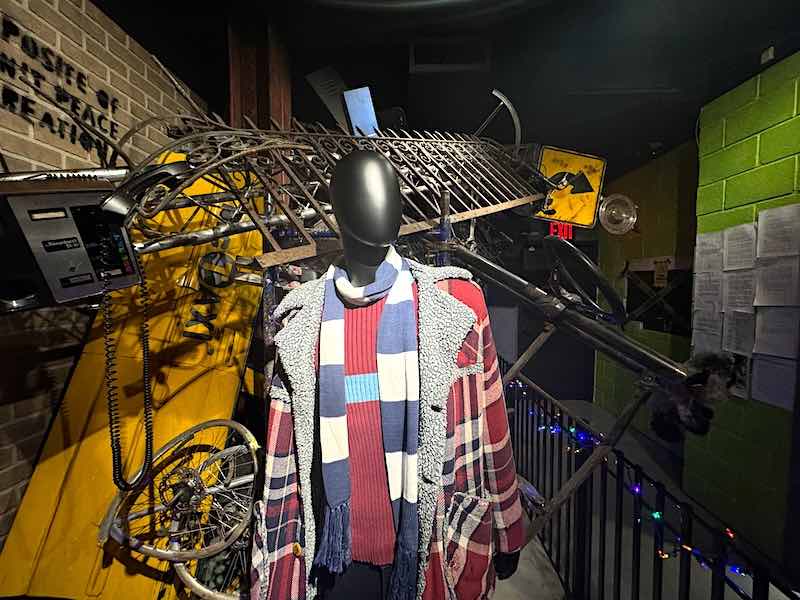
A tribute to the musical Rent featuring the character Mark Cohen’s costume
Behind The Scenes
Upon arriving at the ground floor, I initially believed I had completed the museum tour; however, the final section presented a remarkable surprise for visitors. The last section of the museum was dedicated to the artistic and production teams, who ensure that performances are executed seamlessly each night, providing enjoyment to audiences. Prominent displays highlighted the contributions of stage managers, stage crews, artistic personnel, lighting designers, sound designers, costume designers, makeup artists, and numerous other essential staff working behind the scenes.
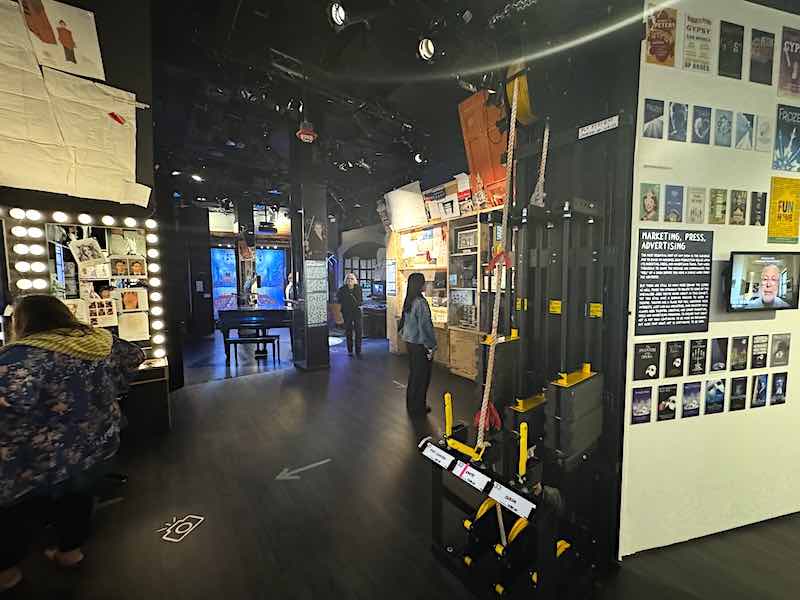
A behind-the-scenes look at the work of stagehands and people who help support shows on Broadway
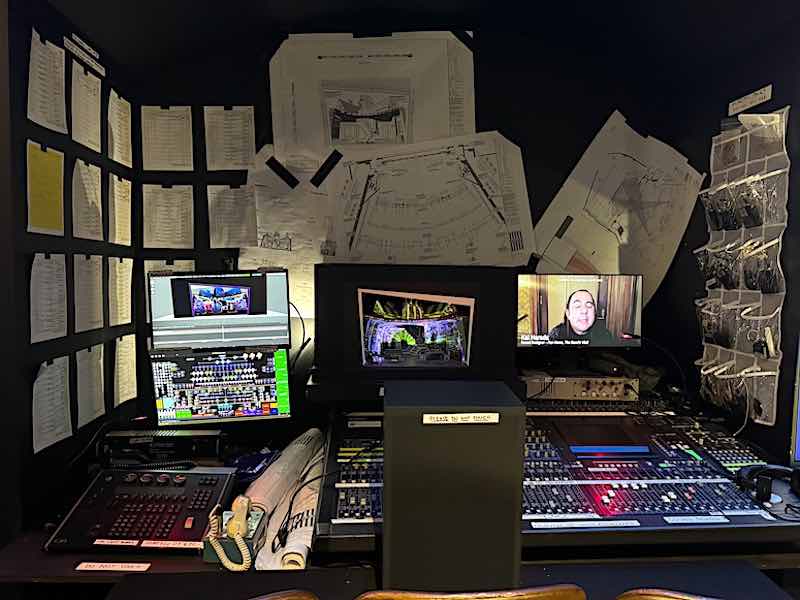
A recreation of the light and sound board for a Broadway show
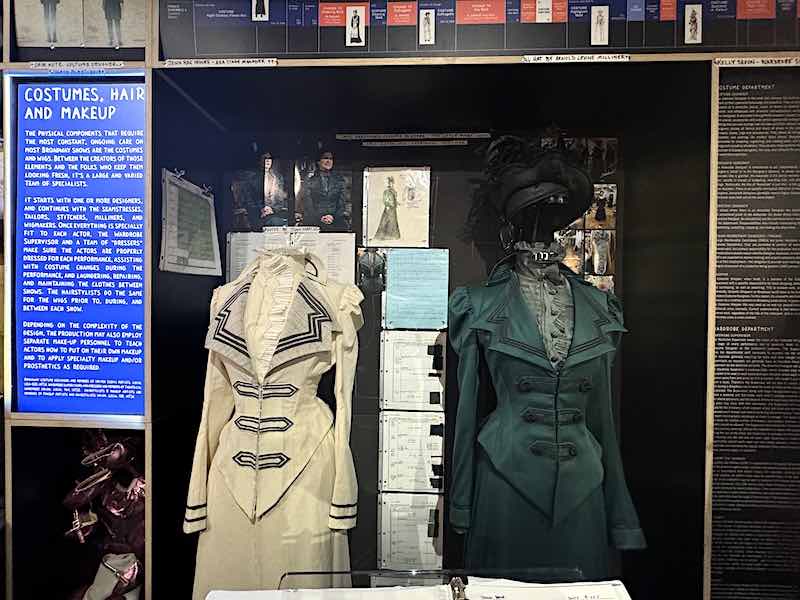
A tribute to the costume, hair, and make-up artists who support Broadway shows
The concluding exhibit showcased a mural spanning multiple walls, illustrating the various stages involved in bringing a production to Broadway. This extensive display recognized that most shows encounter considerable challenges and revisions before they make their debut in Times Square.
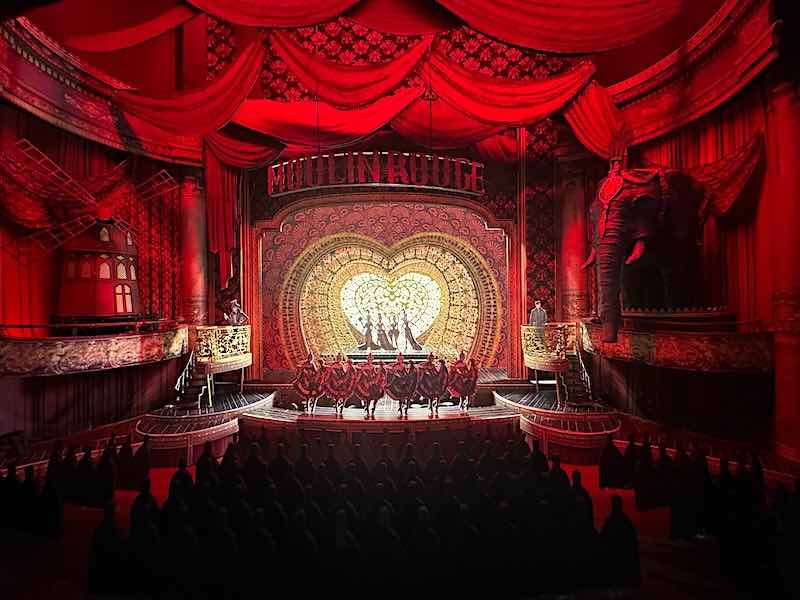
A scale model showing the set for the musical Moulin Rouge
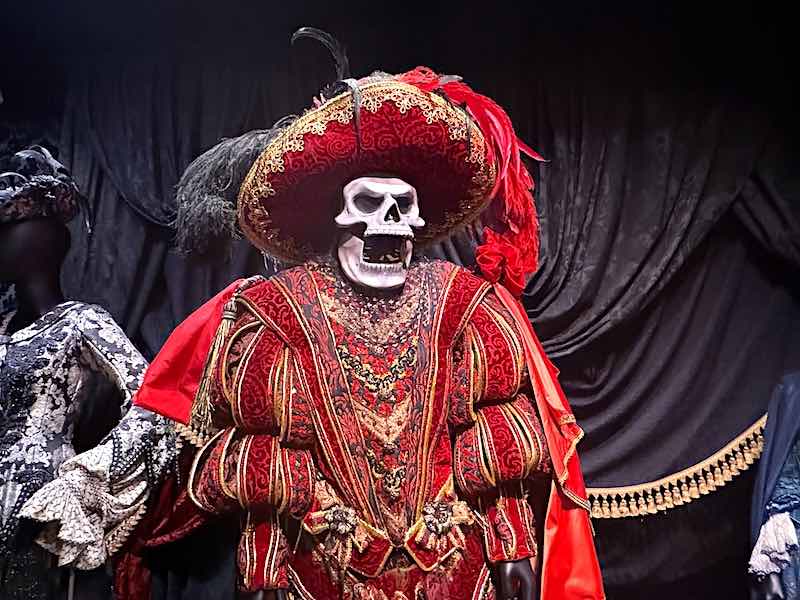
The costume worn by the Phantom of the Opera during the song Masquerade
Final Thoughts and Visitor Tips
Before I visited the museum, I watched several online videos that suggested visitors typically spend around three to four hours exploring the exhibits. As an avid and knowledgeable theater enthusiast, I dedicated around 90 minutes to my visit. This timeframe was adequate for me to appreciate the displays while also allowing time to seek out photographs for this article.
I purchased my ticket in advance and took advantage of a considerable discount due to a special promotion from a museum benefactor. Check the museum’s website in advance to secure the best admission rates. Unlike many attractions in the Times Square vicinity, the museum operates solely during daytime hours, making it wise to consult the museum’s website, which contains numerous details to assist in planning your visit.

A scale model showing the set and theater for the musical Wicked
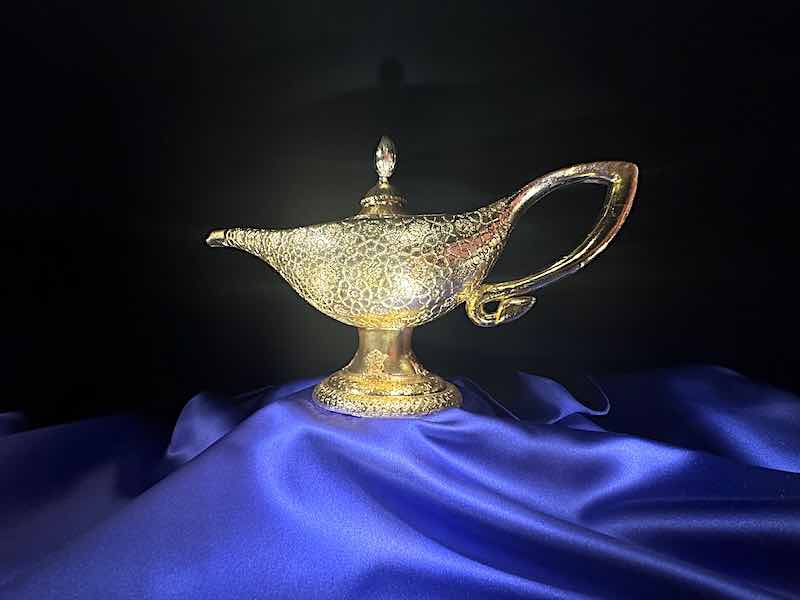
The lamp prop used in the Disney’s musical Aladdin
To the delight of many attendees, the museum featured an extensive gift shop offering Broadway-themed merchandise and posters. Themed talks and topical programs are also offered each month.
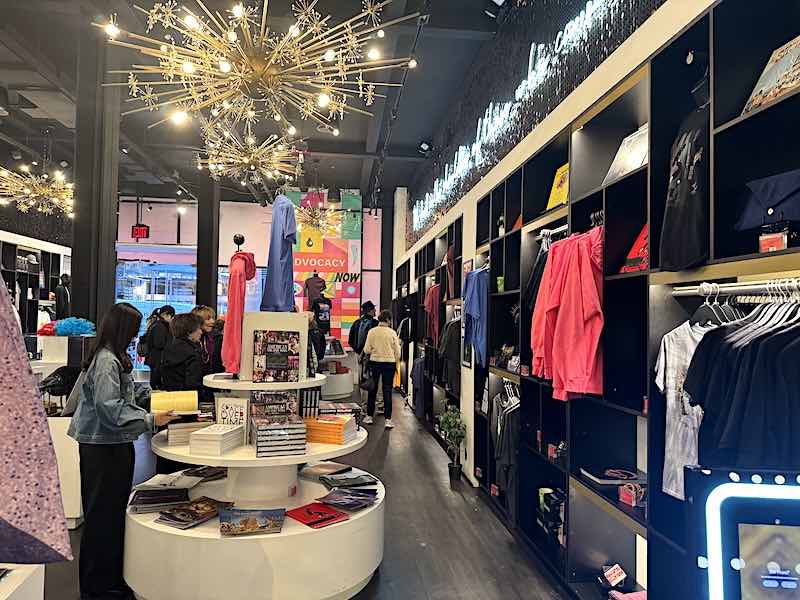
The gist shop at the Museum of Broadway
On the day of my visit, a presentation was being given in a meeting room near the entrance to prepare a group of attendees for their visit. The museum seems to regularly update its displays in light of new acquisitions and often hosts special exhibitions, such as the 30-Year History of Disney on Broadway. Considering the dynamic nature of Broadway, it is probable that the exhibits five years from now will present a varied selection of new items.
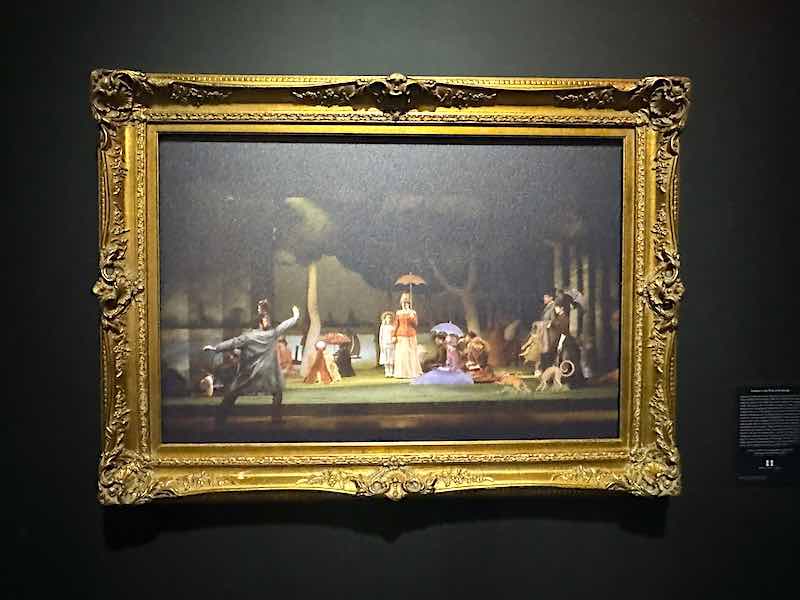
A scene from the Stephen Sondheim musical Sunday in the Park With George
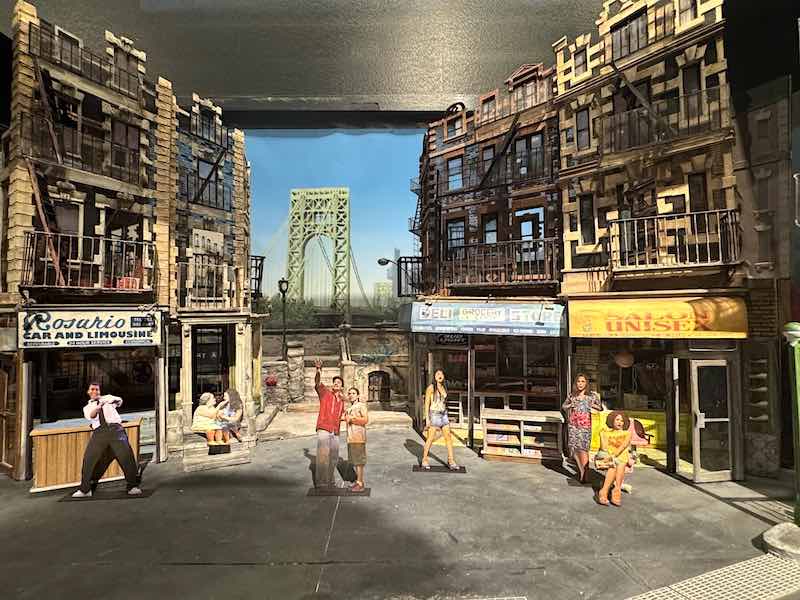
A scale model showing the set for the musical In The Heights
Conclusion
Theater enthusiasts and patrons of Broadway productions will find the museum informative and entertaining. Those who hold a deep appreciation for Broadway musical theater will find particular value in this museum, as it presents numerous opportunities for nostalgia.
My visit was thoroughly enjoyable, and I acquired substantial new knowledge about the world of Broadway theater. Alongside the prominent exhibits were numerous smaller displays that were both informative and delightful. I also encountered unexpected surprises, such as discovering Annie’s iconic red dress from the original 1977 production tucked away in a corner, as well as a somewhat hidden Moulin-Rouge-themed restroom that I came across.

A tribute to Disney’s musical A Lion King featuring puppets and masks
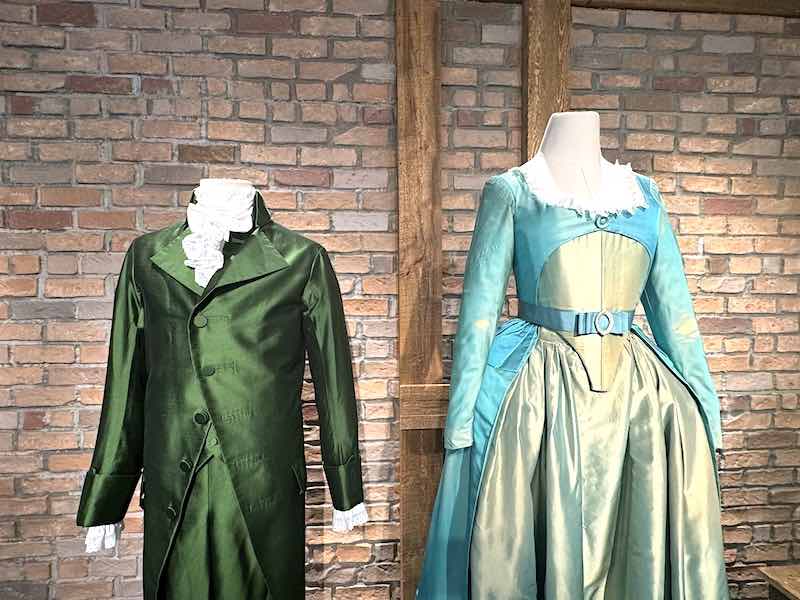
Costumes from the musical Hamilton
Overall, I found the museum to be rich in enjoyable and memorable experiences, even though there were moments when I wished for a bit more. Reflecting on my visit, I realized this was also the way I would have described most of the shows I have seen on Broadway. In their own distinct ways, both the Museum of Broadway and Broadway Theater put on a great show and provide visitors with a memorable few hours of outstanding entertainment.
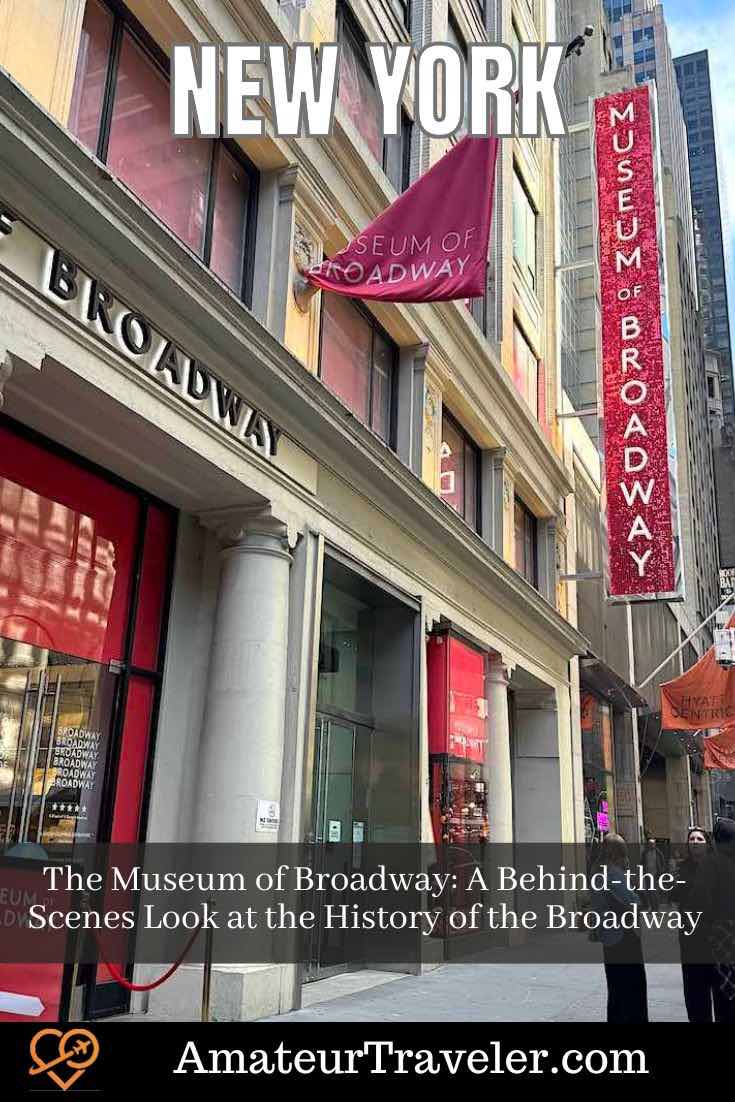
Discover more from reviewer4you.com
Subscribe to get the latest posts to your email.





